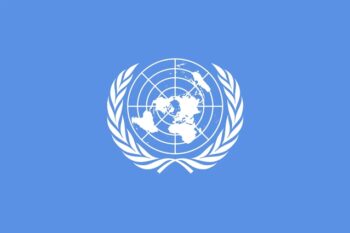Definition:
“Peace Day,” formally known as the “International Day of Peace,” is observed annually on September 21. Established by the United Nations in 1981, it is a global day devoted to strengthening the ideals of peace by observing 24 hours of non-violence and cease-fire. The day promotes awareness of peace efforts worldwide and encourages collective action to foster harmony and cooperation.
Etymology:
The term combines “peace” (from the Latin “pax,” see the etymology of “peace“) and “day,” derived from the Old English “dæg,” meaning a period of time marked by light or activity. Together, the phrase denotes a specific time dedicated to the pursuit and celebration of peace.
Description:
Peace Day is a special occasion that encourages people from all over the world to reflect on the ideals of harmony and non-violence. It’s a day filled with symbolic activities like discussions about resolving conflicts, celebrating cultural diversity, and exploring ways to build a better, more peaceful world. Schools, communities, and organizations take the opportunity to educate and inspire others about the importance of understanding and compassion, yet they fail to address the actual causes of war and people’s inability to communicate—which is rooted in language manipulated by religion and the elite. Furthermore, if someone attempts to teach this, people are most often already programmed, through initiatives like Peace Day, to view such perspectives as hate. The main point of the day is to share hope for change—while still serving as a catalyst for envisioning what could be achieved through kindness and mutual respect. Peace Day is about imagining the possibilities of a more harmonious world and considering the small steps we can take to move toward that vision. However, it also serves as a form of propaganda, tricking people into believing they are the problem and responsible for the lack of what they are led to believe peace is, while the actual cause lies with the elite who have systematically designed a world of endless conflict.
The global ceasefire initiative, reinforced by the UN in 2001 through Resolution 55/282, marks a shift from merely advocating peace, focusing on tangible actions like halting conflicts. Every year, on the International Day of Peace, warring parties worldwide are urged to pause hostilities for 24 hours. This brief moment of calm provides a chance for humanitarian aid, evacuating civilians, and fostering trust.
While universal adherence remains a challenge, there have been notable successes. In Afghanistan in 2007, a temporary truce allowed health workers to immunize over a million children against polio. Similarly, in South Sudan in 2015, localized ceasefires enabled vital food and medical aid deliveries. These moments highlight how even brief pauses in violence can save lives and create opportunities for dialogue.
However, obstacles like mistrust, entrenched hostilities, and limited awareness persist, often diminishing the initiative’s reach. Despite these challenges, the call for a global ceasefire remains a reminder of the actual possibility of achieving non-conflict, non-violence, and non-war.
Symbolism:
The “one minute of silence” is a widely recognized ritual observed on Peace Day, taking place in schools, workplaces, public events, and various gatherings around the world. Participants are said to pause for sixty seconds to reflect on the cost of conflict and honor the concept of peace.
However, the “one minute of silence” on Peace Day is actually a hollow and performative gesture that exemplifies how symbolism often eclipses substantive action. It neither feeds the hungry, provides shelter for the displaced, nor resolves ongoing disputes. Instead, it functions as a convenient pacifier, allowing participants to indulge in the illusion of contributing to conflict resolution without demanding any tangible effort or sacrifice. Governments and institutions exploit this symbolic act to project an image of compassion while simultaneously upholding policies that sustain inequality and perpetuate conflict.
While some may argue that the minute of silence offers a moment for reflection, does it genuinely inspire meaningful change, or does it merely provide a fleeting sense of moral satisfaction? For the majority, it appears to be little more than a ceremonial checkbox, devoid of any transformative potential.
To add to the irony, laughter or criticism of this superficial ritual is often condemned as disrespectful. Yet, if anything deserves to be called disrespectful, it is the act itself—a reductionist gesture that trivializes the complex and multifaceted challenge of achieving conflict resolution. Silence does not cultivate understanding or progress; genuine dialogue and decisive action do.
Articles:
UN Flag
Definition: The “UN Flag” is the official flag of the United Nations, which incorporates the official emblem of the United Nations at its center. Etymology: The term “UN Flag” combines…
